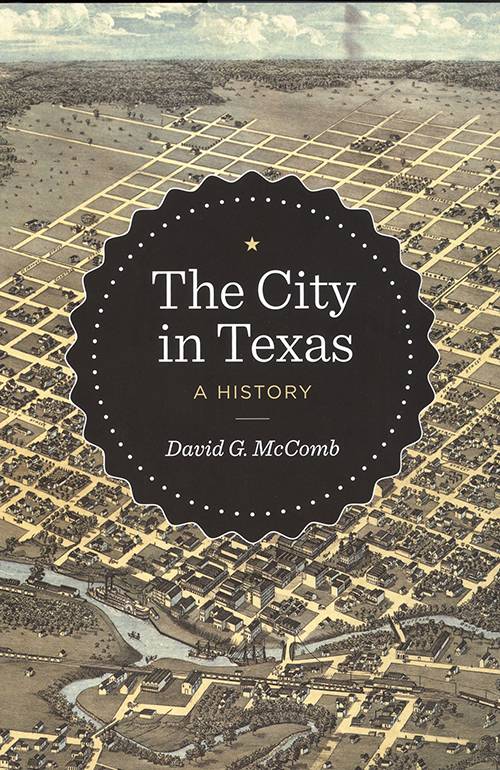Bright Lights, Big City

The City in Texas: A History
by David G. McComb
Austin: University of Texas Press, 2015
352 pp. $35.00 cloth
Reviewed by
Dan K. Utley
Urban historian David G. McComb, whose previous works include focused studies on Galveston and Houston, endeavors to present an expanded perspective on Lone Star urbanization in his latest book, The City in Texas. This is not a comprehensive analytical treatment of the topic, as the title implies, but rather a collection of general historical elements about city development grouped at times thematically, regionally, or chronologically. This is a broad-brush approach, so some aspects of the overall story overlap, while others go unnoticed. The effort to categorize towns historically is commendable, but it also serves to highlight the complexities of the overall theme. Beaumont, the quintessential oil boomtown, was, prior to Spindletop, a thriving lumber town, railroad center, and river port. While Orange is singled out as an example of a lumber town, there is no mention of places like Lufkin, an important inland center of the timber industry, and no discussion of Houston as the headquarters for the leading lumber corporations. Some cities that developed as regional hubs of agricultural commerce, including Texarkana, Temple, and Wichita Falls, are not included at all. Still, the author does an adequate job of challenging the reader to at least think about the roots of urban development through different perspectives.
The first part of the book, primarily devoted to context, wanders a bit, but the author hits his stride later on, beginning with a chapter entitled “The End of the Dirt Road Frontier.” That chapter and the following section on city amenities present the newest material and reflect a true sense of place for the urban landscape within the broader story of Texas history. The chapter entitled “The Elite Rule of the Cities” offers a particularly interesting study of how the system of city management “really worked,” vis-à-vis legendary networks of power brokers that sometimes prevailed. The strength of the book centers on the author’s interpretation of determinants of the modern Lone Star urban centers, which he builds on particularly in the final section that deals with the evolution of postwar development in the latter part of the twentieth century and follows through to the emerging socio-economic diversity and new identity of recent years.
In The City in Texas, McComb provides a general overview of important urban landmarks in Texas history and, as such, gives the reader a good jumping-off place for further research and study. To that end, he offers “Suggestions for Further Reading,” through which he weaves well-known works from the past, including those of C.L. Sonnichsen, David J. Weber, Gilbert R. Cruz, and others, with more recent works by authors such as Mary Jo O’Rear who are exploring new aspects of urban history. In particular, this reviewer appreciates the reference to The New Handbook of Texas and The Handbook of Texas Online, Texas State Historical Association venues which provide basic developmental details on all Texas cities, including the smaller political towns that sometimes go unnoticed in general works, as well as those which, despite early promise and promotion, never quite made the viable transition to the present.
Individuals interested in knowing more about the various pathways to modern Texas cities will find much worthy of exploration in McComb’s new book. They will also no doubt appreciate how much has changed within that cultural landscape in the relatively short time since the state ultimately and irreversibly crossed the historical divide from rural to urban.
Dan K. Utley is an adjunct progessor and the chief historian for the Center for Texas Public History. A natice of East Texas, he holds a BA in history from the University of Texas and an MA in history from Sam Houston State University.
